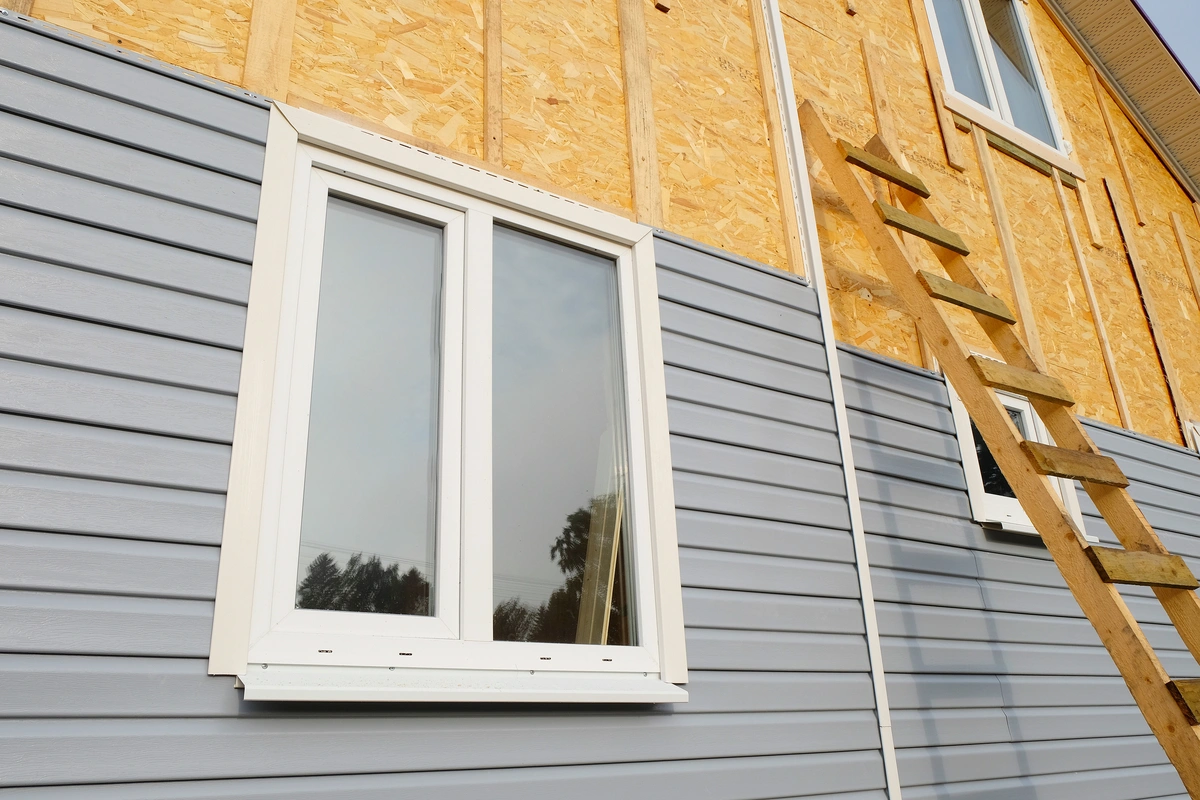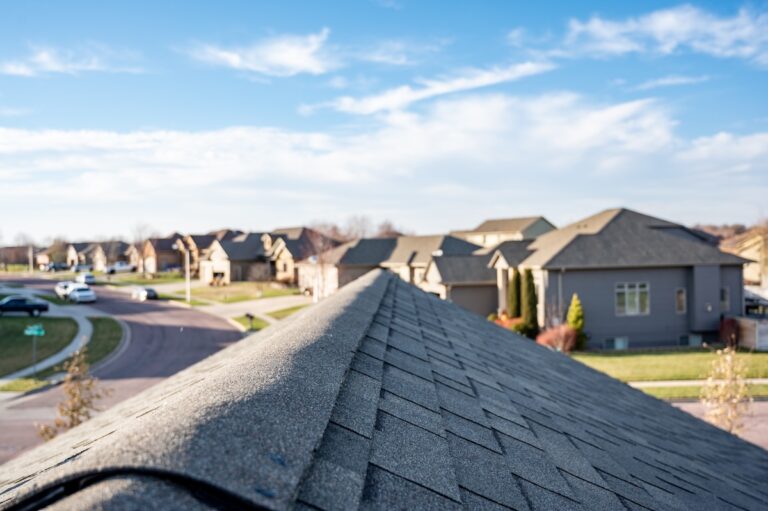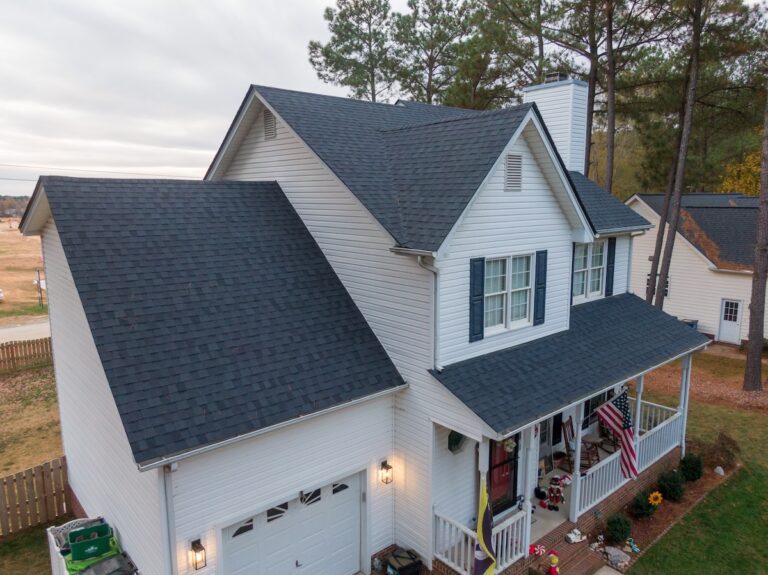Is it time to give your home exterior a refresh? It may be time to update your siding!
Siding replacements can be hugely transformational for your whole home. Whether you’re looking to improve your home’s aesthetics or boost its value, proper siding installation is crucial.
That’s why we’ve made this guide, that will walk you through everything you need to know about siding installation, from:
- Recognizing when it’s time to replace your siding
- How siding is installed properly
- Maintaining it post-installation
When to Install New Siding
Recognizing the right time to install new siding can save you from costly repairs and potential damage to your home. Here are some signs that indicate it might be time for new siding:
- Visible Damage: Cracks, warping, or rotting are clear indicators that your siding needs replacement.
- Faded or Peeling Paint: This usually means the siding material has aged and is no longer providing adequate protection.
- Increased Energy Bills: Poor siding can lead to energy inefficiency, causing higher heating and cooling costs.
- Mold, Mildew, or Fungus: These issues can signify moisture infiltration, which can damage your home’s structure.
- Frequent Need for Repairs: If you find yourself constantly fixing your siding, it may be more cost-effective to replace it entirely.
Different Types of Siding
Choosing the right type of siding can make a huge difference in your home’s appearance and durability. Here are some popular options:
Vinyl Siding
- Pros: Affordable, low maintenance, and available in a wide range of colors and textures.
- Cons: Can crack in extreme weather conditions and may fade over time.
Wood Siding
- Pros: Offers a classic, natural look and is eco-friendly.
- Cons: Requires regular maintenance, such as painting and sealing, and is susceptible to termites and rot.
Fiber Cement Siding
- Pros: Extremely durable, fire-resistant, and mimics the look of wood without the maintenance.
- Cons: More expensive than other options and requires professional installation due to its weight.
Aluminum Siding
- Pros: Lightweight, resistant to rust and insects, and can be painted.
- Cons: Can dent easily and may not provide the same aesthetic appeal as other materials.
Brick Siding
- Pros: Highly durable, fire-resistant, and offers excellent insulation.
- Cons: Expensive and labor-intensive to install.
How to Install Siding in 4 Easy Steps
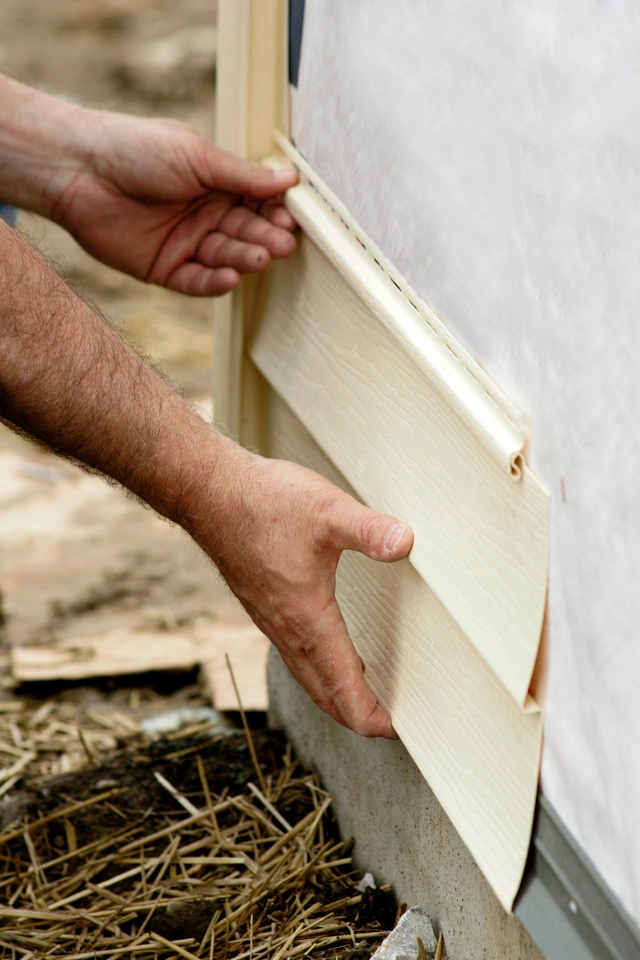
While it’s often best to leave siding installation to the professionals, understanding the process can help you make informed decisions. Here’s a basic overview of how siding installation works:
Step 1: Prepare the Surface
- Remove Old Siding: Carefully remove the existing siding without damaging the underlying structure.
- Inspect and Repair: Check for any damage to the underlying sheathing or insulation and repair as needed.
- Install House Wrap: Apply a weather-resistant barrier to protect against moisture.
Step 2: Install the Starter Strip
- Measure and Cut: Measure the length of the wall and cut the starter strip accordingly.
- Attach the Strip: Secure the starter strip along the base of the wall using galvanized nails.
Step 3: Install the Siding Panels
- Begin at the Bottom: Start at the bottom and work your way up, ensuring each panel locks into the previous one.
- Leave Space for Expansion: Leave a small gap at the ends to allow for thermal expansion.
- Secure the Panels: Use nails to secure the panels, but avoid nailing too tightly to allow for movement.
Step 4: Install Trim and Finish
- Corners and Edges: Install corner posts and J-channels to cover the edges.
- Windows and Doors: Use window and door trim to create a clean, finished look.
- Seal Joints: Apply caulk around windows, doors, and other openings to prevent moisture infiltration.
Why You Should Leave It to the Pros
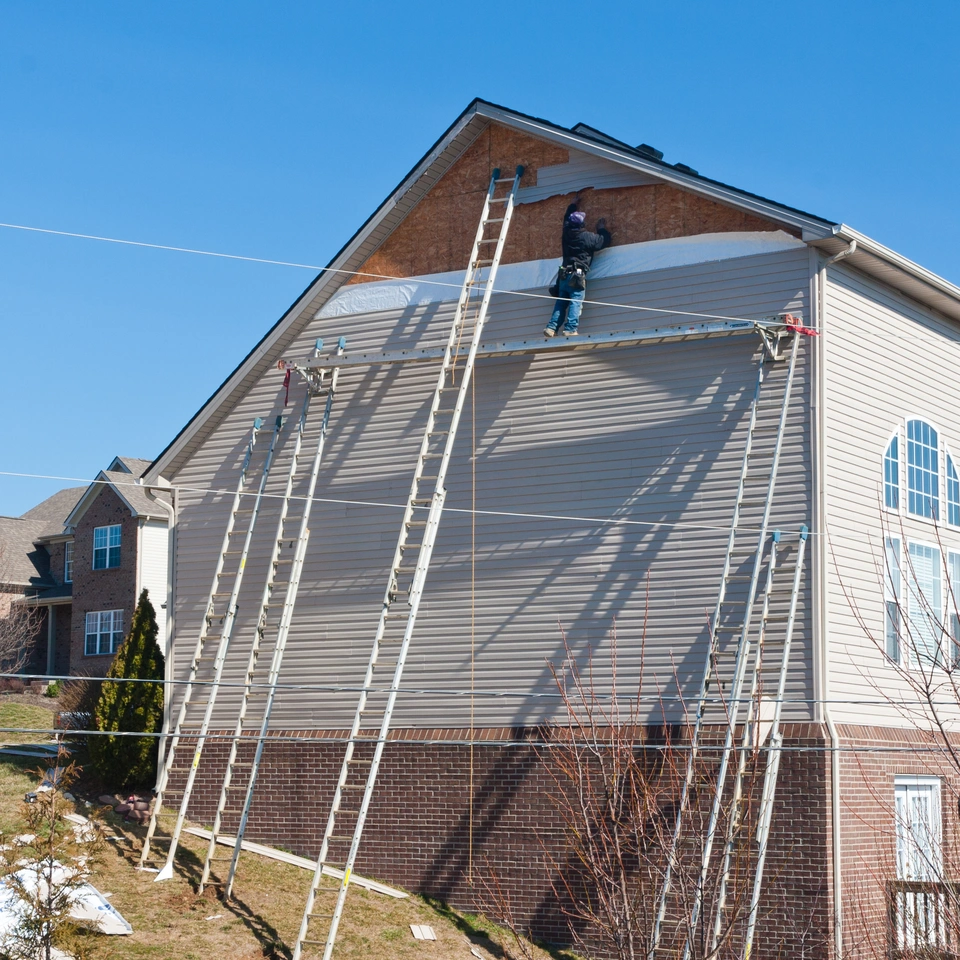
While DIY siding installation can be tempting, there are several reasons to consider hiring professionals:
- Expertise and Experience: Professionals have the knowledge and experience to ensure the job is done correctly and efficiently.
- Warranty and Insurance: Many contractors offer warranties on their work and are insured, providing peace of mind.
- Proper Tools and Equipment: Professional installers have the right tools and equipment to handle the job safely and effectively.
- Time and Energy: Installing siding can be a time-consuming and labor-intensive process. Hiring professionals allows you to focus on other tasks.
Cost of a New Siding Installation
The cost of siding installation can vary widely depending on several factors, including the type of siding, the size of your home, and labor costs in your area. Here’s a general breakdown of what you can expect:
- Vinyl Siding: $5,000 to $14,000
- Wood Siding: $8,000 to $20,000
- Fiber Cement Siding: $10,000 to $24,000
- Aluminum Siding: $7,000 to $15,000
- Brick Siding: $15,000 to $40,000
Keep in mind that these are average costs and can vary based on your specific circumstances. It’s always a good idea to get multiple quotes from reputable contractors before making a decision.
How to Take Care of Your Siding
Proper maintenance can extend the life of your siding and keep it looking great for years to come. Here are some tips for taking care of your siding:
Regular Cleaning
- Vinyl and Aluminum Siding: Clean with a mixture of water and mild detergent. Use a soft brush or pressure washer to remove dirt and grime.
- Wood Siding: Use a wood cleaner and scrub gently with a soft brush. Avoid using a pressure washer, as it can damage the wood.
- Fiber Cement Siding: Clean with a garden hose or a low-pressure washer. Avoid high pressure, which can damage the surface.
- Brick Siding: Use a mixture of water and mild detergent. Scrub with a stiff brush and rinse thoroughly.
Inspection and Repairs
- Regular Inspections: Check your siding at least once a year for signs of damage, such as cracks, chips, or mold.
- Prompt Repairs: Address any issues promptly to prevent further damage. This may involve patching small holes, replacing damaged panels, or resealing joints.
Repainting and Sealing
- Wood Siding: Repaint or reseal every 3-5 years to protect against moisture and UV damage.
- Fiber Cement Siding: Repaint every 10-15 years, or as needed, to maintain its appearance and durability.
- Aluminum Siding: Repaint as needed, typically every 10-15 years, to keep it looking fresh.
We Install Your Siding So You Don’t Have To!
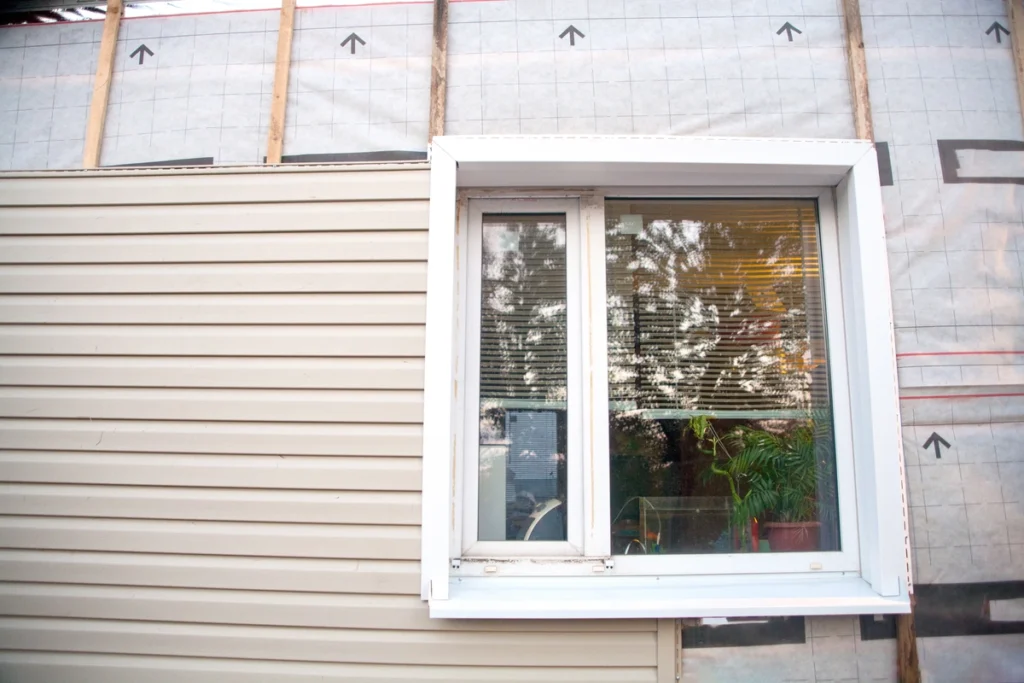
Siding installation is a significant investment in your home’s appearance and protection. By understanding when to replace your siding, the different types available, and the installation process, you can make informed decisions that will enhance your home’s value and curb appeal. While DIY installation is possible, hiring professionals ensures the job is done correctly and efficiently.
Ready to give your home a fresh new look? Contact our team of experienced siding professionals today for a free consultation and quote.
